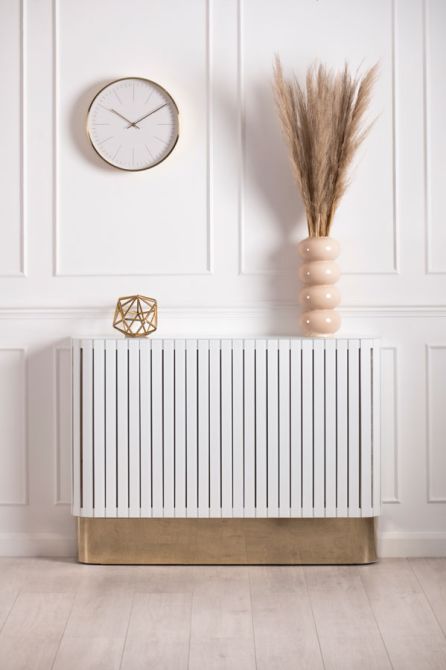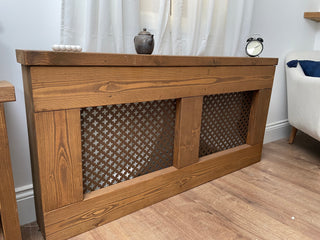Radiator Cover Concepts to Boost Your Interior Design
Radiator Covers: Understanding Materials, Layouts, and Advantages
Radiator covers serve both practical and aesthetic functions within a home, offering an array of materials such as steel, hardwood, and mdf to suit numerous style choices. Choosing the ideal radiator cover involves comprehending the subtleties of materials, layouts, and their connected advantages.
Types of Materials


Wood covers, usually crafted from hardwoods such as oak or maple, provide a traditional, cozy appearance that matches typical interiors. Their longevity and ability to be discolored or painted add to their versatility. Metal covers, typically made from steel or aluminum, are preferred for their robustness and modern appearance, often featuring smooth lines that improve modern spaces.
MDF, a manufactured timber product, is popular for its cost-effectiveness and ease of modification. It can be repainted or ended up to match existing design while using a smooth surface area. Plastic covers, while much less common, are immune and light-weight to dampness, making them suitable for humid settings.
Ultimately, the option of material for a radiator cover must line up with the home owner's design preferences, functional demands, and the certain atmosphere where the cover will certainly be set up. Each product uses a distinctive personality, making certain that there is an alternative to match every preference and setup.
Popular Layout Styles
Stressing visual charm, prominent design styles for radiator covers mirror a variety of preferences and interior decoration fads. Typical layouts frequently feature complex woodwork and elaborate outlining, making them appropriate for traditional or vintage-inspired insides. These covers typically include sculpted aspects, giving a warm and welcoming feel to any room.
On the other hand, modern styles focus on minimalist aesthetic appeals, defined by clean lines and underrated sophistication. Products such as steel or streamlined wood with a smooth finish are generally utilized, allowing these covers to mix effortlessly into modern rooms. Industrial designs, on the other hand, embrace resources like subjected metal and concrete, adding a strong statement to loft space or urban settings.
For those seeking an unique touch, bespoke layouts offer modification options that accommodate individual preferences, making it possible for property owners to pick colors, patterns, and materials that complement their decor. Furthermore, farmhouse-style covers incorporate rustic elements, including troubled wood and straightforward forms that stimulate a comfy, country appeal.
Advantages of Radiator Covers
Radiator covers not only improve the visual appeal of an area but also provide numerous practical benefits that make them a beneficial enhancement to any kind of home. One of the primary advantages is security, specifically in homes with pets or children. Covers decrease the danger of burns from warm radiator surface areas, guaranteeing a much safer setting.
In addition, radiator covers can improve energy efficiency. By directing warm right into the space instead of enabling it to run away, they aid preserve a regular temperature, decreasing home heating costs in time. This is specifically advantageous in older homes where radiator systems might be less efficient.
Another notable advantage is sound reduction. Radiators can sometimes generate undesirable audios throughout operation, and covers can assist muffle these sounds, adding to a much more relaxed home. Radiator covers can be functional, giving extra storage or display room, consequently optimizing the utility of often-overlooked locations.
Last but not blog here least, they can secure radiators from dust and particles, which can prevent effectiveness and boost upkeep demands. With these integrated benefits, radiator covers become a functional option for enhancing both the capability and style of any kind of home atmosphere.
Installation Factors To Consider
Setting up radiator covers requires mindful factor to consider to guarantee both capability and security (Radiator cover). First, analyze the dimensions of your radiator and the surrounding room to guarantee a correct fit. Precise dimensions are vital; an ill-fitting cover can obstruct warmth flow or develop safety threats
Following, assess the product of the cover. While wood uses aesthetic charm, steel choices might provide much better toughness and heat resistance. Think about the weight of the cover as well; larger covers may call for additional support or supports to stay clear of sagging or damage gradually.
Air flow is another important aspect. Covers must feature appropriate air movement to avoid getting too hot and maintain efficient heating. Try to find layouts with slats or perforations that allow warm to flow without blockage.
Furthermore, ensure that the cover is securely installed to stop crashes, specifically in homes with family pets or youngsters. Radiator cover. It's recommended to comply with the maker's setup standards closely and, if needed, consult a professional for complex installations
Maintenance and Care Tips
Correct upkeep of radiator covers is important for ensuring their long life and ideal performance. For repainted or timber covers, think about a suitable gloss or safety finishing to keep their appearance.
Inspect the covers regularly for indications of wear or damage, such as fractures or peeling off paint. Resolving these concerns immediately can avoid more degeneration. Guarantee that the covers are firmly secured and check for any kind of loose screws or installations, as vibrations from the radiator can loosen them over time.
In cooler months, avoid positioning heavy items or attractive products in addition to the radiator covers, as this can hamper heat circulation and cause unneeded stress to the structure. Last but not least, think about seasonal upkeep Continued by eliminating the covers for extensive cleansing and assessment throughout warmer months when the furnace is non-active. Embracing these straightforward care ideas will certainly enhance the performance and visual allure of your radiator covers, ensuring they serve their function properly for years to find.

Final Thought
In summary, radiator covers offer as useful and aesthetic improvements to domestic rooms. Careful consideration of installment and upkeep further makes sure the long life and effectiveness of radiator covers in any type of home setting.
Radiator covers offer both aesthetic and useful objectives within a home, supplying a range of materials such as wood, mdf, and steel to suit different layout preferences. Selecting the right radiator cover entails understanding the nuances of products, layouts, and their linked advantages.Emphasizing aesthetic appeal, popular design styles for radiator covers reflect a range of tastes and interior style patterns.Radiator covers not only enhance the aesthetic appeal of a room however likewise provide a number of functional benefits that image source make them a beneficial addition to any home. Consider the weight of the cover as well; heavier covers may require additional assistance or supports to prevent sagging or damage over time.